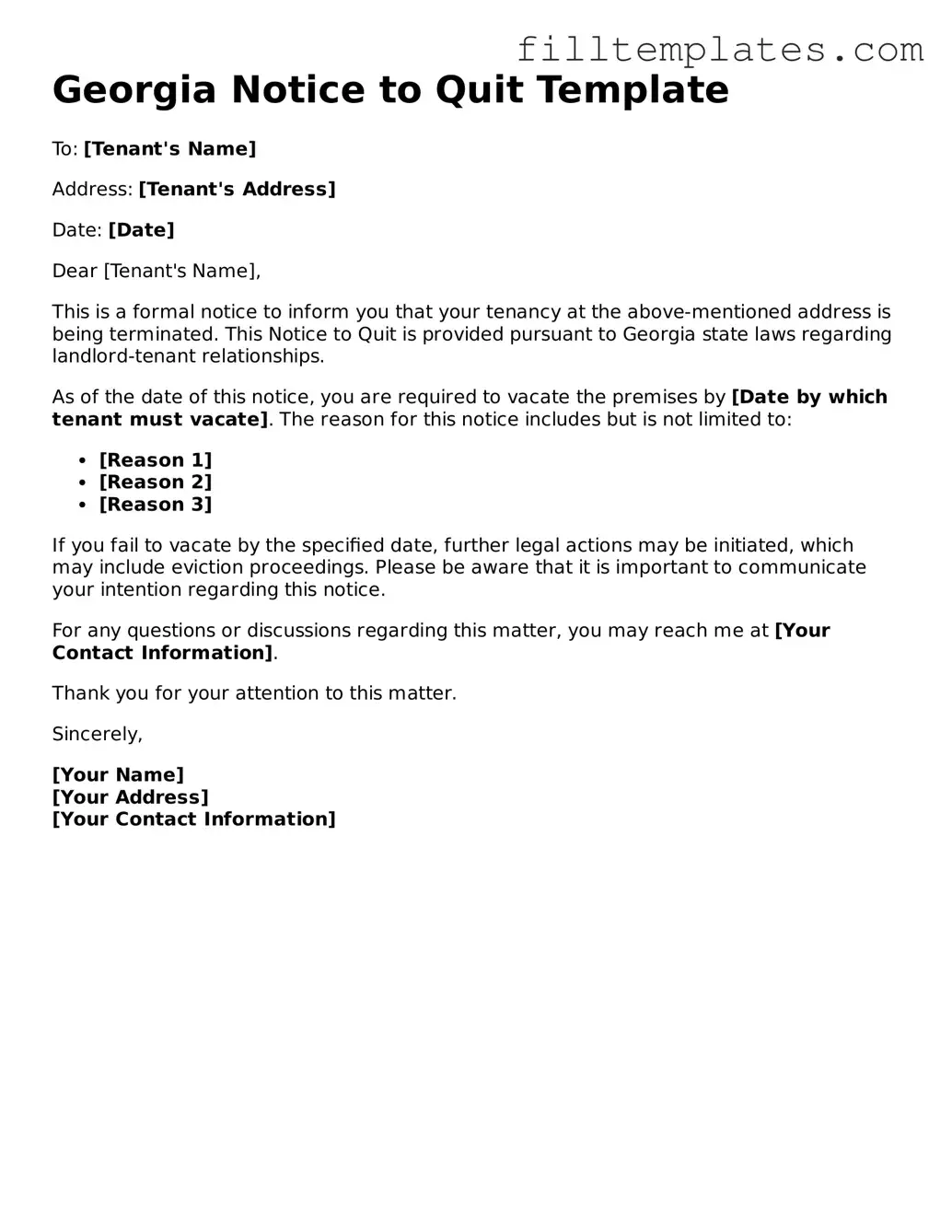Official Notice to Quit Template for the State of Georgia
The Georgia Notice to Quit form is a legal document used by landlords to formally notify tenants of their intent to terminate a rental agreement. This notice serves as a crucial step in the eviction process, providing tenants with information about the reasons for termination and the timeframe to vacate the premises. Understanding this form is essential for both landlords and tenants to ensure compliance with state laws and to protect their rights.
Open Notice to Quit Editor
